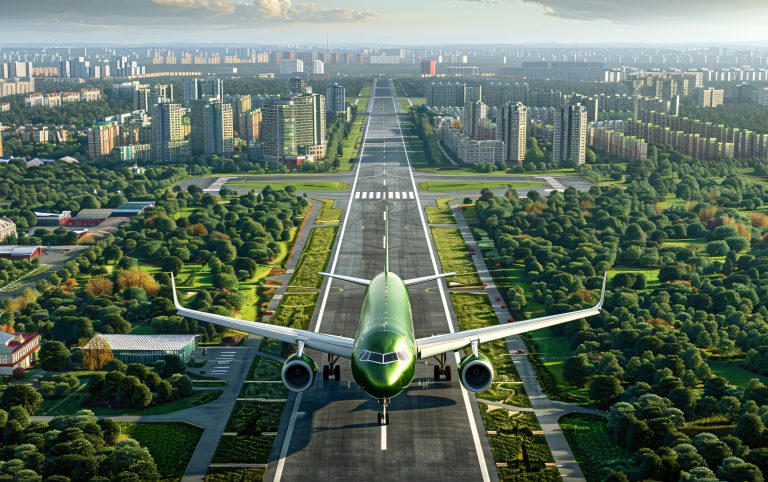Understanding the Altitude: How High Do Planes Fly?
Overview of Commercial Flight Altitude
Passenger aircrafts operate at how high planes fly for reasons such as aerodynamics, safety, as well as efficiency in its use of fuel. The commercial aircrafts’ cruising altitude is between 29,000 to 38,000ft, or 9-12 km in the International System of Units. This range of altitude is optimum because at this level air resistance is minimal, the engines are most efficient and passengers are not uncomfortable.
High Altitude Flying in Kilometres
Converting flight altitude used means that planes operate at between 29 to 39 thousand feet which is between 9 and 12 kilometres above sea level. This depends on the type of aircraft, weather prospects, as well as flight paths that are considered.
For instance, the general altitude for flying is 10 thousand kilometres (or 33000 feet) which is quite typical for intercontinental flight. It also ensures planes have a huge margin to bypass most weather interferences and get the clients a smooth ride.
Can Airplanes Reach 50,000 Feet in the Sky?
Of the 7 million or so commercial flights that take off each year, almost all do not reach the state above 40,000 feet; however, some aeroplanes are equipped to do so. There are special types of jets including the Concorde which is however now retired and this kind of jets operated at an altitude of up to 60,000 feet.

Some of today’s privately owned business jet aircraft, and certain military aircraft are able to altitude of 50,000 feet or higher. Nonetheless, commercial aircrafts do not generally operate above 45;000 feet because the upper altitude comes with problems such as the pressure inside the cabin, engines, and airspace control.
The Reason for Flying at 37,000 Feet
Another important concept is cruising altitudes that shows that one of the most familiar cruising altitudes is 37000 feet. The specific altitude is chosen for several reasons.<|advice|This specific altitude is chosen for several reasons. First, at this specific height, there is a low density of air, which asserts mild pressure thus enhancing low fuel consumption.
Second, most of the weather disturbances like thunderstorms occur at lower altitudes and that is why flying over them makes the flight smoother and safer. Last but not least, flying at this altitude ensures that planes are out of the way of other planes flying over congested areas such as cities and highly congested airports hence reducing the occurrences of possible accidents such as mid-air collisions.
Distance from the Ground to the Aircraft
The ability to understand how a high plane is able to take off from the ground involves the consideration of the fact that altitude is usually taken from the surface of the sea, not the ground on which the aircraft is taking off. For example, if a plane is flying over sea with an altitude of 37,000 feet whereas the sea level is 5,000 feet, then the space between the ground and the plane is merely 32,000 feet. Some physical features such as the Himalayas can deceive our perception of altitude while flying, still, typical commercial aeroplanes continue to hover at their typical altitude above sea level.
High Altitude and Its Impact on Flight Safety
changes in altitude put into consideration reduce the level of safety as well as flight efficiency. Flying at heights such as 37, 000 feet also ensures that there are few other planes in the air hence reducing the likelihood of an encounter. Also, this altitude means that one is a better glider in the extremely unlikely chance that the engines quit, and will give pilots more time to find a suitable landing site. Moreover, as the altitude increases, the planes experience fewer turbulent climatic conditions as far as the extremes of the weather is concerned during flights.
Why Planes Do Not Fly Higher Than 45,000 Feet
That is why high-altitude, though as a rule beneficial, has its constraints. Typically, commercial aircrafts do not fly above 45000 ft because air density is extremely low and hence the engines become ineffective. Another problem is that at high altitudes the amount of oxygen is relatively small and this is what can affect the burning in the engines.

Moreover, the design of real passenger carrying aircraft requires a greater concern due to the increased density associated with hight altitudes which puts numerous and diverse cabin pressuring systems at work.
Role of the Atmosphere in Determining Flight Altitude
Besides temperature, the atmosphere also affects the altitude at which the flights are most appropriate to be made. One needs to know that the earth has layers of atmosphere and the commercial planes cruise at the lower stratosphere. This layer provides stable air that is also relatively free from areas of turbulence.
Below this, in the troposphere, weather and winds are comparatively random and have less formations. Flying over the troposphere makes planes avoid most of the severities of weather which would otherwise make flying risky for passengers.
The Effect of Aircraft Design on Altitude
This also influences the maximum altitude that an aircraft can attain in as much as the design and engineering of the aircraft do. It is the designs like the wings, the engine power, and the strength of fusible parts that determines how high a plane can fly. For instance, supersonic transportations such as the now-retired Concorde aircrafts have compact and slender constructions and strong engines which enable them to operate at much higher elevation than normal commercial aeroplanes.
At the same time, most of the present day passenger aircraft are being designed to operate at around thirty to forty thousand feet where the speed, fuel consumption and comfort are maximised.
Anchored Text on Airplane Altitude
If one wants to get a broader perspective of how high planes fly, there is another aviation source which offers detailed information on the same.
Summary of Factors Influencing Flight Altitude
Overall, it can be concluded that altitude used by aeroplanes depends on several parameters, such as design of an aircraft, consummation of fuel, states of the atmosphere and security measures. Whereas, main line commercial aircraft fly at altitudes ranging from 30,000 to 40,000 feet, there are other aircrafts that can fly at much higher altitudes. But even at these great heights planes have to try to achieve the best of both worlds while the act is bound by atmospheric and technological constraints.
This altitude range makes flight smooth, efficient and safe and results in the fact that planes fly above most of the weather formation and other planes. With knowledge on why there are certain altitudes that planes can fly, the passengers will be in a better position to understand some of the challenges that go into air travel and the science behind it.






